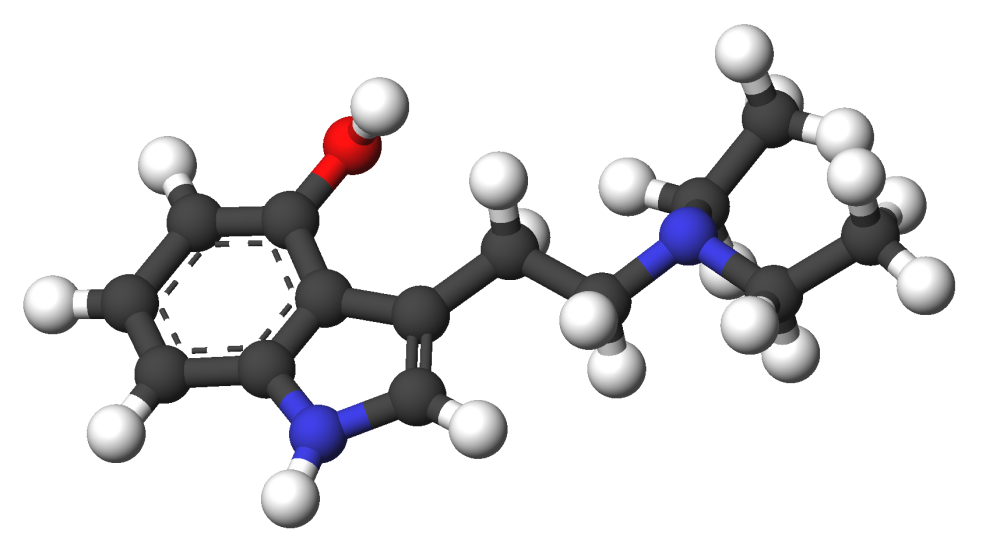Summary
4-HO-DET, also called 4-hydroxy-diethyl-tryptamine and sometimes known as CZ-74, is a hallucinogenic substance belonging to the class of psychedelic compounds with a moderate duration of action. It is classified as a substituted tryptamine, sharing structural similarities with psilocin, ethocybin, and 4-HO-DIPT.
| Identifiers | |
|---|---|
| IUPAC name | |
| CAS Number | 22204-89-3 |
|---|---|
| PubChem CID | 9991554 |
| ChemSpider | 8167136 |
| UNII | 7E0BR15575 |
| ChEMBL | ChEMBL143202 |
| CompTox Dashboard (EPA) | DTXSID60176755 |
| Chemical and physical data | |
| Formula | C14H20N2O |
| Molar mass | 232.327 g·mol−1 |

Analogs
The acetic acid ester of 4-HO-DET is referred to as 4-AcO-DET, while the phosphoric acid ester of 4-HO-DET goes by various names such as 4-phosphoryloxy-DET, CEY-19, or ethocybin.
History
In the late 1950s, the inventors of 4-HO-DET, namely Albert Hofmann and Franz Troxler, assigned it the laboratory code CZ-74. Subsequently, during the 1960s, German researchers Hanscarl Leuner and G. Baer conducted human clinical trials involving this substance, along with its phosphoryloxy-analog ethocybin.

Dosage
The typical oral dosage range for 4-HO-DET is reported to be between 10 and 25 milligrams, with the acetate and phosphate ester forms potentially requiring slightly higher doses.
Drug prohibition laws
In Sweden, the Health Ministry of the Swedish Parliament, known as Sveriges riksdag, has categorized 4-HO-DET as a “health hazard” under the Act on the Prohibition of Certain Goods Dangerous to Health (Lagen om förbud mot vissa hälsofarliga varor). This classification, which came into effect on November 1, 2005, is specified in their regulation SFS 2005:733, where it is listed as 4-hydroxy-N, N-diethyltryptamin (4-HO-DET). Consequently, the sale and possession of this substance are considered illegal in Sweden.
FAQ
- What is 4-HO-DET?
- 4-HO-DET, also known as 4-hydroxy-diethyl-tryptamine or CZ-74, is a hallucinogenic and psychedelic compound with properties similar to other tryptamines.
- How was 4-HO-DET originally classified and studied?
- In the late 1950s, the inventors Albert Hofmann and Franz Troxler assigned 4-HO-DET the laboratory code CZ-74. Subsequently, during the 1960s, German researchers Hanscarl Leuner and G. Baer conducted human clinical trials with this substance alongside its phosphoryloxy-analog ethocybin.
- What is the typical dosage for 4-HO-DET?
- The usual oral dosage for 4-HO-DET falls within the range of 10 to 25 milligrams. However, the acetate and phosphate ester forms may require slightly higher doses.
- Is 4-HO-DET legal in Sweden?
- No, in Sweden, 4-HO-DET is classified as a “health hazard” under the Act on the Prohibition of Certain Goods Dangerous to Health (Lagen om förbud mot vissa hälsofarliga varor). This classification, effective since November 1, 2005, is listed as 4-hydroxy-N, N-dimethyltryptamine (4-HO-DET), making both the sale and possession of this substance illegal.
- What are the reported effects of 4-HO-DET?
- 4-HO-DET is a psychedelic substance, and anecdotal reports suggest it can induce altered perception, visual distortions, and changes in consciousness. The specific effects can vary among individuals.
- Is 4-HO-DET safe to use?
- The safety of 4-HO-DET is not well-documented, and its effects on the human body and mind are still being studied. As with all psychedelics, it is essential to exercise caution, follow harm-reduction practices, and use it in a safe and controlled environment.
- Can 4-HO-DET be used for therapeutic purposes?
- There is limited research on the therapeutic potential of 4-HO-DET. Any potential therapeutic use should be conducted under the guidance of a qualified healthcare professional and in a controlled clinical setting.
- Where can I obtain 4-HO-DET?
- The availability of 4-HO-DET may vary, and its sale may be subject to legal restrictions in many regions. Obtaining it from unverified sources can be risky, as the quality and purity of the substance may not be guaranteed. Exercise caution and seek reputable sources if you are considering acquiring it.
References
- Greene SL authored the section on “Tryptamines” in the second edition of the book “Novel Psychoactive Substances: Classification, Pharmacology and Toxicology,” edited by Dargan PI and Wood DM. The book was published in London, United Kingdom, by Academic Press in 2021. (ISBN: 978-0-12-819030-2)
- In Sweden, changes were made to the ordinance governing certain hazardous substances. This alteration is detailed in “Förordning om ändring i förordningen (1999:58) om förbud mot vissa hälsofarliga varor” (Ordinance amending the ordinance (1999:58) on the prohibition of certain dangerous goods). This update was made available in the Swedish Code of Statutes (Svensk författningssamling) on October 6, 2005, and the original document is in Swedish. (Archived from the original (PDF) on June 26, 2021). (Retrieved on September 6, 2013).